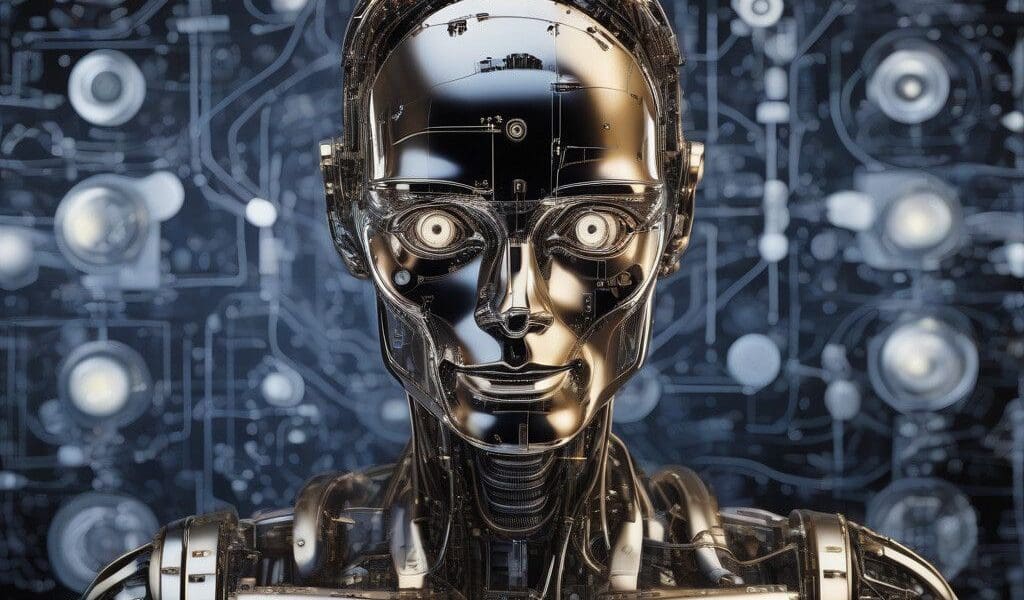AI-Da Robot's Portrait of Alan Turing: A New Era in Art and Technology
In an unprecedented auction, Ai-Da, the world’s first ultra-realistic humanoid robot artist, is making headlines with the sale of her captivating portrait of Alan Turing at Sotheby’s London. This moment is not just a sale; it symbolizes a new intersection of art and artificial intelligence, provoking discussions about the role of AI in creative domains.
The painting, titled “AI God,” stands at an impressive 2.2 meters high and encapsulates the essence of Turing, a mathematician renowned for his pivotal contributions during World War II and foundational work in computer science. Ai-Da’s artistic endeavor reflects not only Turing’s legacy but also the ethical dilemmas surrounding AI technologies that he foresaw.
Crafted with advanced AI algorithms, Ai-Da is equipped with cameras and bionic hands, allowing her to create art that challenges our notions of creativity. The painting’s color palette is notably muted, and the fragmented planes of Turing’s face in the portrait evoke the complexities inherent in managing artificial intelligence—complexities Turing himself warned about.
As the art world anticipates the auction running from October 31 to November 7, the estimated bid for Ai-Da’s creation is positioned between £100,000 and £150,000. This auction does not merely represent a financial transaction but rather serves as a commentary on the burgeoning relationship between art and technology. In a time when AI is reshaping various industries, including creative ones, the significance of this sale cannot be overstated.
Previously, Ai-Da has gained recognition for her art showcasing music festival performers such as Billie Eilish and Paul McCartney. Her creator, Aidan Meller, has collaborated with experts from Oxford and Birmingham to enhance Ai-Da’s capabilities. Meller emphasized that Ai-Da’s artwork raises critical questions about the future of AI and the race for global control over its potential—a sentiment echoed in several recent discourse on the implications of AI technologies in various sectors.
This unique sale at Sotheby’s highlights the uncertainties and optimistic possibilities surrounding AI in the art sector. The intersection of technological innovation with traditional artistic processes invites a broad audience, ranging from art enthusiasts to tech-savvy adolescents, to ponder the implications of such advancements.
Consider the impact of AI on creative fields: Artists have often manipulated tools and mediums to express their vision, and now, AI serves as both creator and collaborator. This shift necessitates a reevaluation of authorship and originality. If a robot can produce art, how do we define what it means to be an artist? Are these creations merely products of sophisticated programming, or do they carry the weight of emotional and intellectual expression?
Moreover, the concerns raised about the influence of AI in the creative space align with Turing’s broader anxieties regarding technology’s impact on society. The portrait encapsulates profound philosophical queries: What constitutes creativity in an age of machines? Can AI feel? And importantly, who is responsible for the thoughts and feelings expressed through AI-generated designs?
As humans venture into new realms powered by technology, such as generative art software and automated content creation tools, the sale of Ai-Da’s portrait serves as a powerful reminder of our intertwined destinies with the technologies we create. It raises fundamental questions about creativity, ethics, and the potential futures we are forging.
As the world watches this historical auction unfold, it is crucial to engage with these matters deeply. The event acts as a catalyst for conversations surrounding AI’s role in creative processes and how society might adapt to an era where machines can create alongside humans—not only posing threats but enhancing our cultural expressions as well.
In conclusion, Ai-Da’s portrait of Alan Turing is much more than a striking visual representation; it is a complex meditation on our relationship with technology and its unfolding future. The coming weeks will reveal not just the final sale price but also the ongoing discussion about the essence of art in a technologically advanced society.








